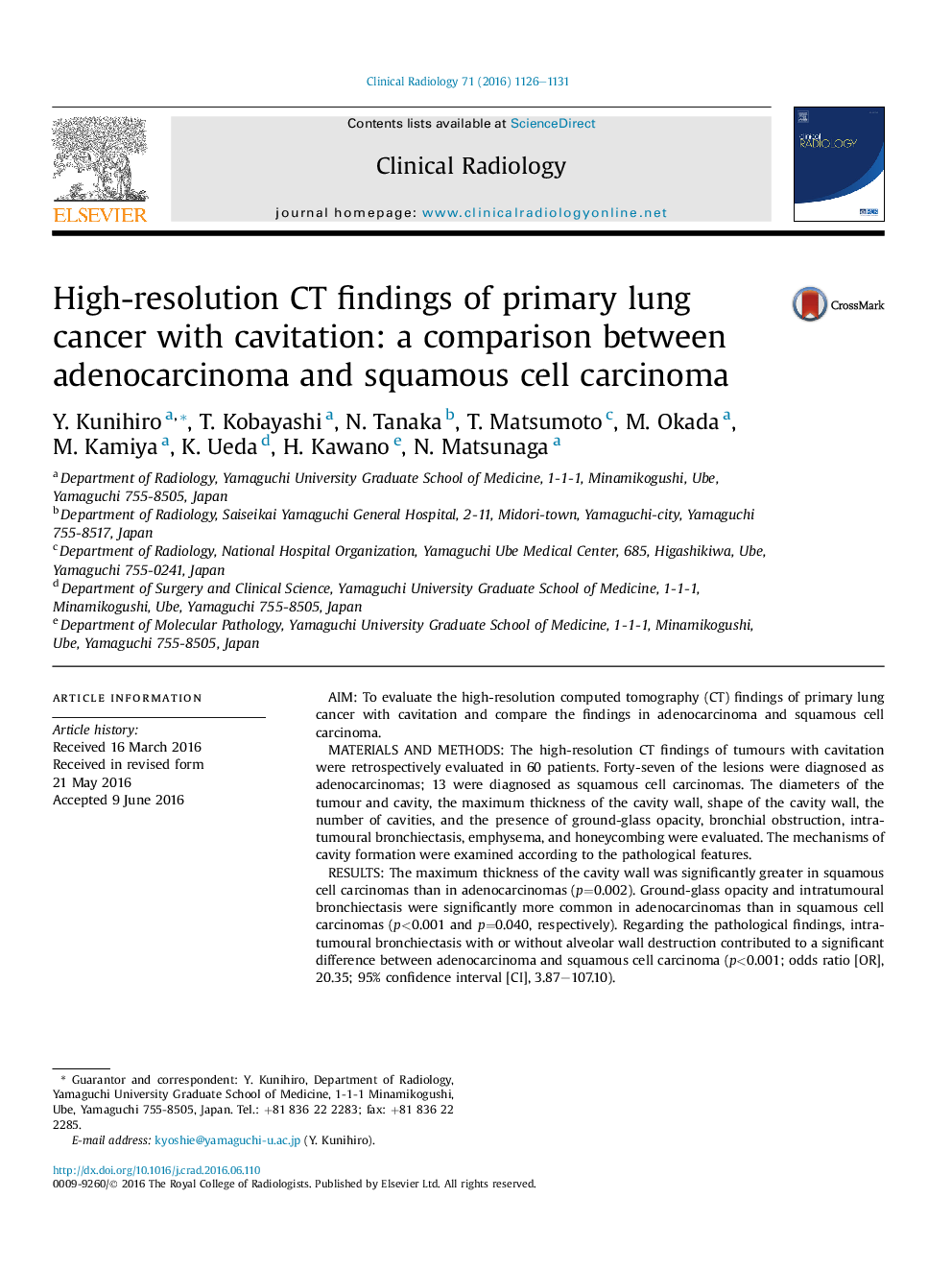| Article ID | Journal | Published Year | Pages | File Type |
|---|---|---|---|---|
| 3981112 | Clinical Radiology | 2016 | 6 Pages |
•Necrosis is more common in squamous cell carcinoma than in adenocarcinoma.•The cavity wall tends to thicker in squamous cell carcinoma than in adenocarcinoma.•Intratumoral bronchiectasis is strongly suggestive of adenocarcinoma.
AimTo evaluate the high-resolution computed tomography (CT) findings of primary lung cancer with cavitation and compare the findings in adenocarcinoma and squamous cell carcinoma.Materials and methodsThe high-resolution CT findings of tumours with cavitation were retrospectively evaluated in 60 patients. Forty-seven of the lesions were diagnosed as adenocarcinomas; 13 were diagnosed as squamous cell carcinomas. The diameters of the tumour and cavity, the maximum thickness of the cavity wall, shape of the cavity wall, the number of cavities, and the presence of ground-glass opacity, bronchial obstruction, intratumoural bronchiectasis, emphysema, and honeycombing were evaluated. The mechanisms of cavity formation were examined according to the pathological features.ResultsThe maximum thickness of the cavity wall was significantly greater in squamous cell carcinomas than in adenocarcinomas (p=0.002). Ground-glass opacity and intratumoural bronchiectasis were significantly more common in adenocarcinomas than in squamous cell carcinomas (p<0.001 and p=0.040, respectively). Regarding the pathological findings, intratumoural bronchiectasis with or without alveolar wall destruction contributed to a significant difference between adenocarcinoma and squamous cell carcinoma (p<0.001; odds ratio [OR], 20.35; 95% confidence interval [CI], 3.87–107.10).ConclusionThe cavity wall tends to be thicker in squamous cell carcinomas than in adenocarcinomas. The presence of ground-glass opacity and intratumoural bronchiectasis is strongly suggestive of adenocarcinoma.
